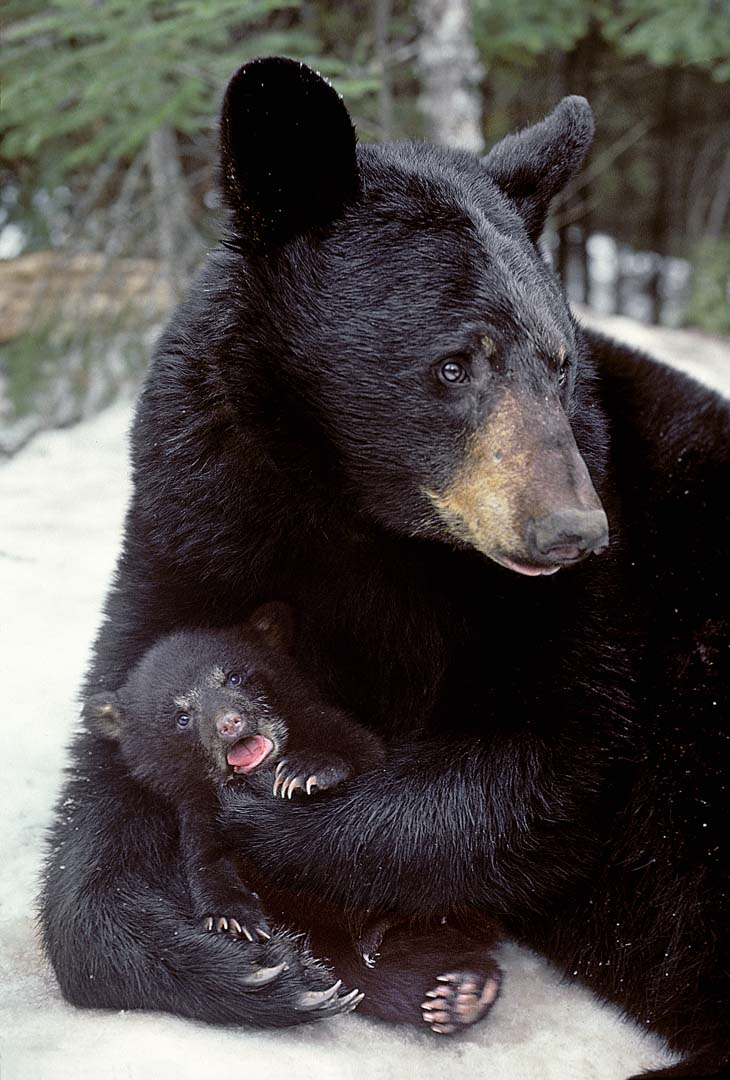Daily Updates
Gerry - UPDATE June 26, 2020
26 June 2020
Print Email
Another memory of Gerry is from July 14, 1990 when she was a yearling on her own. I was at my backwoods office up against a writing deadline for the U.S. Forest Service and stayed late. Lynn and Jerry at Kawishiwi River 1989
Lynn and Gerry at Kawishiwi River 1989

I called Donna and told her I?d be home late or might stay at the Kawishiwi Field Lab that night. At 1 AM I was about to go home but checked Gerry?s radio signal. She was just up on the ridge bedded down for the night. I wondered what her heart rate was and stopped to see her. My watch didn?t work. I went back down to the bedroom door at the Lab where Gerry surprised me. I didn?t know she had followed me down from the ridge until I felt her beside me at the door, which gave me an idea. I let her in the bedroom where I would stay. Gerry explored around and eventually crawled up and snuggled down beside me. I again was amazed that this basically solitary animal could have an almost human need for closeness and comaraderie.
Lynn and Gerry in White Pine 1989
Lynn and Gerry in W. Pine 1989

From the time I was little, I had a good feeling when an animal accepted me?be it a young starling who flew down to my hand days after I had released it into the wild, or a snake that went from defensive and biting to being calmly relaxed as I held it before letting it go or taking it home in my shirt to make a habitat for it in our backyard. My nature-loving mother was wonderfully tolerant and encouraging of my little projects. Now, lying beside me was a young bear that had been raised by a wild mother but never forgot our first meeting when I greeted her like a bear nose to nose when she was still in her socialization period at less than 3 months of age.
But now my scientific curiosity kicked in. What might a bear?s heart rate drop to as it falls asleep and goes through REM sleep cycles? Does its temperature change? Does its breathing rate change? This was before corporations began trying to learn such things about bears using implanted sensors. Gerry with cub
Gerry with cub

My only previous opportunity to learn the heart rate of a sleeping bear was from Gerry 9 months earlier when I was lying down taking notes as Gerry and her family were raking bedding into a wild den a couple days before settling into it for the winter. Gerry came over to me, took a break, and settled down beside me. She fell asleep with my hand on her femoral artery as her pre-hibernation heart rate fell to 22 beats per minute as compared to over a hundred per minute in previous months.
Gerry totally trusted me as I gently inserted a digital rectal thermometer, put my fingers on her femoral artery, and minute by minute began recording her heart rate, breathing rate, and temperature. It all worked so well, that we did that several nights, also getting her weight before and after her night of sleep to learn her respiratory water loss. The scale was just outside the building.
Gerry, Lynn, and Hugh Morton with others
Gerry, Lynn, and Hugh Morton - 1992

The bond between us was such that even when she had cubs a couple years later, I could still pick her up and have her relax in my arms. I was stronger back then. That is all part of why I would let no harm come to her when an unpopular recommendation I had made led to the two top USFS officials trying to fire me and working with the DNR to end my bear studies. That is when I found that high DNR officials were willing to help me behind the scenes. As part of that, a member of the governor?s staff had Judge Miles Lord come to the rescue of Gerry and myself. Gerry had a big public following as the result of a monthly Minnesota Public Radio update on Gerry over the years. With help from sources I would not have thought possible, help and decisions came down through the ranks, changing the previous plans of lower officials and paving the way for me to bring Gerry to my friend Hugh Morton?s Grandfather Mountain in North Carolina. In the end, the incoming Clinton Administration fired the two top USFS officials for forest mismanagement and whistleblower harassment, albeit too late to save my bear study. Consequently, I retired and began working for the Wildlife Research Institute that I had founded a couple decades before.
The picture is of Hugh Morton photographing Gerry and me as we celebrated Gerry and her cubs? arrival at Grandfather Mountain. Hugh Morton was instrumental in all of it. Having run for governor of North Carolina and being officially recognized as a southern gentleman, he knew how to generate the right kind of help.
Thank you for all you do.
Lynn Rogers, Biologist, Wildlife Research Institute and North American Bear Center

 Author
Topic: Jewel and her cubs (Read 2451430 times)
Author
Topic: Jewel and her cubs (Read 2451430 times)
